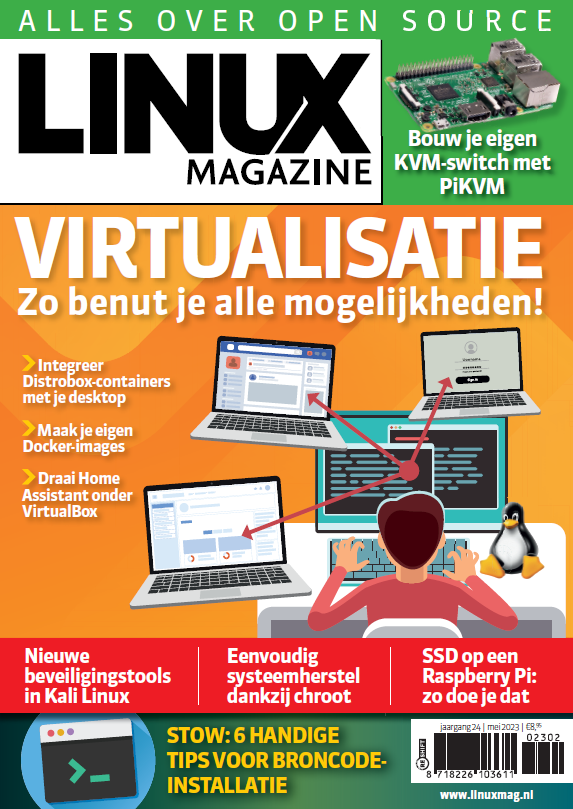
Virtualise Windows 8.1 in Linux
- May 26, 2014
- 0
 Werken in en ontwikkelen voor Windows zonder het hebben van de juiste dual boot door het creeeren van een virtuele machine.
Werken in en ontwikkelen voor Windows zonder het hebben van de juiste dual boot door het creeeren van een virtuele machine.
Sometimes using Windows is a necessary evil. A lot of office environments still use Windows, and sometimes you’ll need Windows- specific applications and software if you want to work from home. There’s also the problem of developing cross-platform apps – constantly switching between operating systems is time- consuming and can, frankly, get tiring. The solution to a lot of these issues is to never dual- boot in the first place, but instead to virtualise Windows on your machine.
VirtualBox makes it easy to create virtual machines, and it’s what we’ll be using in this tutorial. It’s a bit of a different process to install Windows, though, and we’ll be covering that in detail. We can also have it interact with the folders and storage from the host machine, allowing you to set up a shared folder to access files and dev builds.
You’ll need a decently powered, modern PC to be able to run the VM smoothly, and make sure you have plenty of RAM.
foto
Resources
VirtualBox
VirtualBox Guest Additions
ISO of Windows
Step-by-step
Step 01 Install VirtualBox
The necessary first step, VirtualBox is available in most repositories as the package virtualbox. Some distros – such as Fedora – don’t include it in the repositories; however, you can get binaries along with the source code from the VirtualBox website listed in the resources section.
Step 02 New virtual machine
Start up VirtualBox and click on New on
the top menu to create a new virtual machine. It will first ask you to name it, and will try to fit a category to the name. The category is mostly optional, although make sure it’s set to 32-bit or 64-bit for the version you plan to use.
Step 03 Volatile memory
You’ll need to set the RAM that the virtual machine will take from the host system. 2GB is the recommended amount for Windows 8; while you should definitely try to fulfil that requirement, we suggest using half of your system’s available RAM.
foto
Step 04 Storage space
Windows requires a little more hard drive space than a Linux distro. VirtualBox will suggest 25GB; however, if you can spare the space, you should up it to 50 or 100 if you plan to use it for a bit more than basic development or office work.
Step 05 Storage type
Choose VDI as the type of hard drive you want, and then make sure it’s dynamically allocated. This means the space for the storage won’t be taken up all at once, so if you’ve created a 100GB virtual hard drive, it will only use the space it needs at any one time. Name it and click Create.
Step 06 System settings
Select the newly created VM and then hit Settings on the top bar. Go to the System tab first and enable EFI if you’re using Windows 8 or later. Next, go to Display; make sure Video Memory is set to maximum and tick Enable 3D Acceleration.
Step 07 Windows disc
Click on the Storage tab to add the Windows installation disc. Click on the empty disc icon underneath the IDE controller, and then the disc icon that shows up on the right. If you have the disc, insert it into your PC and choose ‘host drive’ from the menu. Otherwise, find and select the ISO.
Step 08 First boot
Once you’re all finished, click Start while the Windows VM is selected. It will open a window and boot into Windows installer. Go to View on the top settings and click on Fullscreen to set the VM to always launch and stay in full-screen mode. If it’s staying at a prompt screen, you may have to disable EFI.
Step 09 Install preparation
The first step in installing is to set the language, as you normally would. Click Install and then agree to the licence. After this, you’ll be asked how you want to install; click on the Custom install option to install from scratch.
Step 10 Storage
Unless you plan to do any crazy dual-booting, you will only need to select the empty space on your hard drive. Otherwise, Windows gives you tools that lets you create partitions so that you can install a Linux distro or other Windows version elsewhere.
Step 11 Wait for it
Windows can take a while to install, and will go through several phases, including rebooting once or twice during the process. Leave it alone and it will do its thing without any interruptions.
bron: www.linuxuser.co.uk




